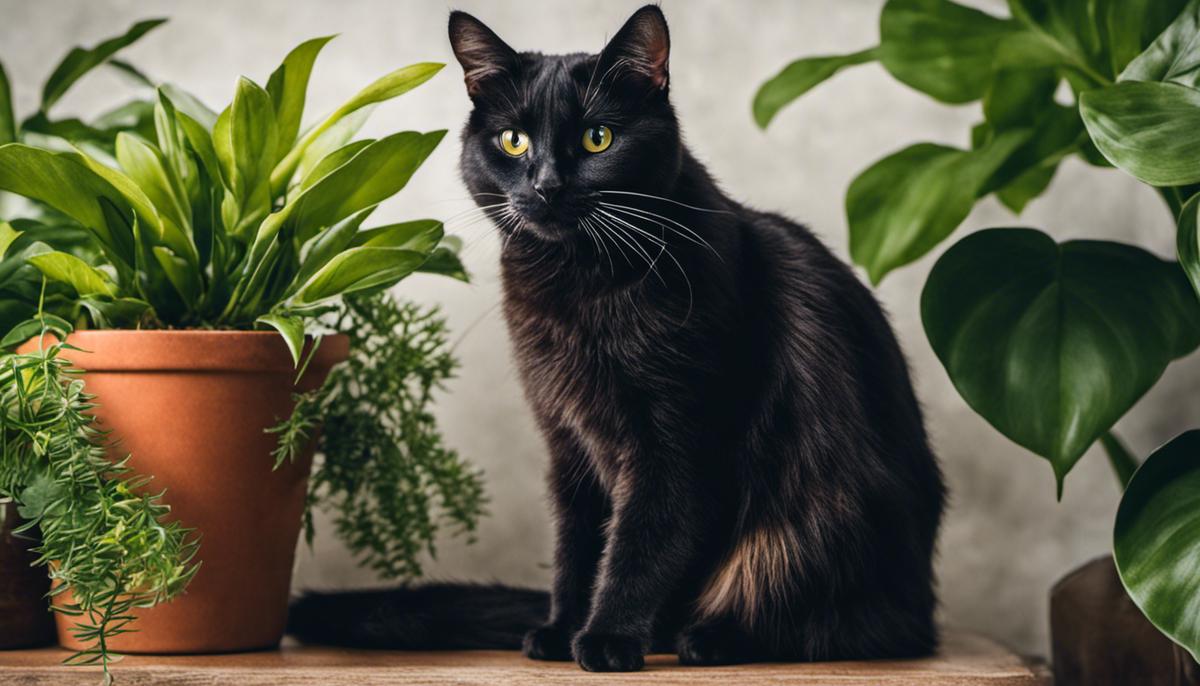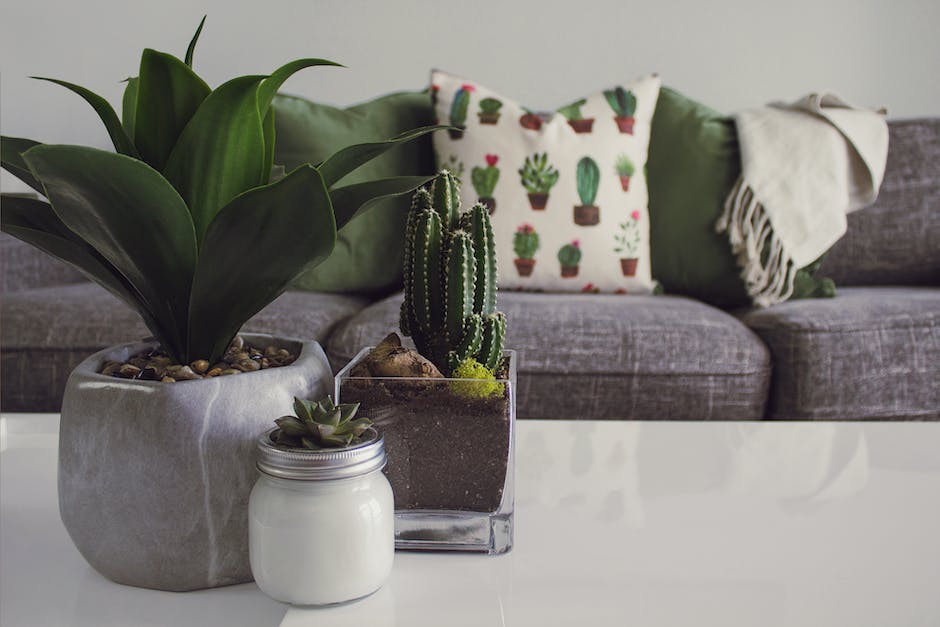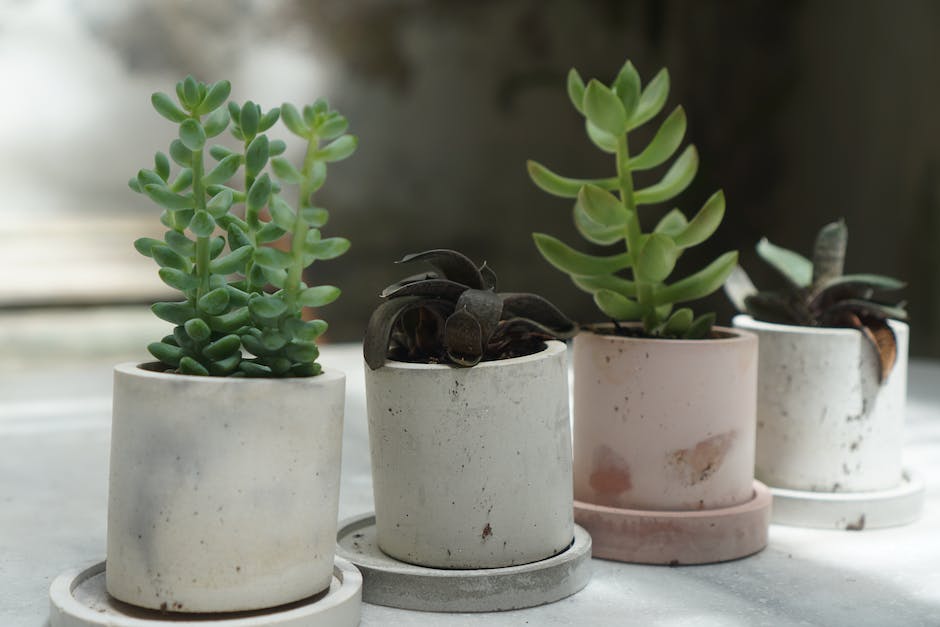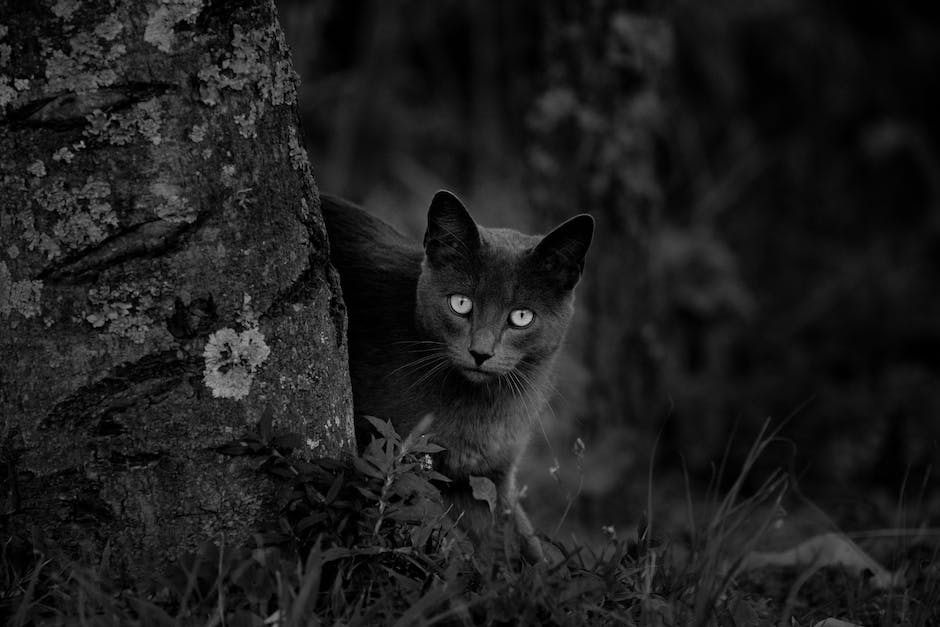Keep Cats Away from your Indoor Plants: A Guide

Indoor plants create a pleasing aesthetic and contribute to a refreshing ambiance in our homes. However, they become a source of worry for cat owners as cats have an innate fascination with the greenery. This essay aims to illustrate why cats are drawn to indoor plants, highlight various plants which pique their interest, and identify potentially poisonous plants. Subsequently, you’ll discover effective means to safeguard your indoor flora from feline interference, whether through deterrents, establishing protective barriers, or strategic placement of plant pots. Finally, you’ll gain insights into how you can train and redirect your fur friend’s curiosity away from the plants, using toys and rewards to modify their behavior.
Understanding Cats and Plants
Feline Fancy: Understanding Why Cats Love Indoor Plants, and Which Ones to Avoid
What devoted cat owner hasn’t witnessed their beloved feline friend nibbling at a houseplant or two? While it might be a head-scratcher for many, in actuality, there are quite a few good reasons that could explain this seemingly strange behavior. Understanding these reasons can help make our homes a haven for both our two-legged family members and those beloved furry pals with the notorious nine lives.
One of the crucial things to remember is that cats’ inherent curiosity often means they are instinctively drawn to explore their surroundings. So, when a new houseplant gets introduced into their familiar territory, they just have to investigate it thoroughly, including taking a little taste.
Additionally, certain plants can provide cats with essential nutrients not readily available in their regular diet. In the wild, cats often consume grass, which provides a source of folic acid to help in the production of hemoglobin. Cats might transfer this behavior to the indoor environment in the absence of an available outdoor equivalent.
Even better, gnawing on plants can sometimes help cats expel hairballs. The indigestible fiber found in plant matter can assist in the compaction of loose hair in the gut and aid in its expulsion through the digestive tract.
However, while these tendencies might be normal for our furry friends, not all houseplants are cat-friendly. It’s imperative to recognize the plants which pose a risk to cats’ health, so they can be avoided to keep our pets safe and sound.
One such plant is the ever-popular Lily. From Easter Lilies to Tiger Lilies, these beautiful blooms unfortunately contain toxins that can be deadly to cats. Another common indoor plant, the Dieffenbachia or “Dumb Cane,” can lead to oral irritation, excessive drooling, difficulty swallowing, and vomiting in cats.
Philodendrons, both heart-leaf and split-leaf versions, should be kept away from prying paws. Ingestion can lead to oral irritation, pain and swelling of mouth, tongue, and lips, excessive drooling, vomiting, and difficulty swallowing. Similarly, the Sago Palm is often used as an ornamental shrub, but it contains a severe level of toxicity for cats and can lead to vomiting, diarrhea, seizures, or even liver failure.
Then there’s the seemingly innocent English Ivy, often used as a decorative houseplant or outdoor ground cover. This ubiquitous plant is unfortunately quite toxic to cats, causing vomiting, abdominal pain, hypersalivation, and diarrhea.
Truth be told, creating a safe and comfortable environment for all family members, including our precious pets, is a significant component of a harmonious home. So remember, next time your fuzzy family member takes a liking to your lush green plants, it might be more than just a kitty quirk!

Effective Cat-Proofing Methods for Indoor Plants
Creating a Harmonious Home: Repelling Cats from Indoor Plants
There’s no denying that cats and foliage can be tricky to unify. While we’d love to fill our homes with lush, oxygenating greenery, certain houseplants can pose notable risks to our curious feline friends. Although we’ve already highlighted the importance of recognizing these specific dangers, our focus now shifts; how can we, as nurturing caregivers, protect our indoor gardens and foster a harmonious environment?
One popular, pet-friendly approach is through aversions. Cats have an incredibly keen sense of smell, often up to 15 times sharper than a human’s. With this in mind, we can employ certain strongly-scented plants, such as mint or rosemary, citruses like lemon or orange peels, or non-toxic essential oils that are distasteful to their delicate olfactory systems, providing a natural deterrent.
Another effective tip is to limit accessibility. Though our cats are agile climbers, small obstacles can make a massive difference. Place your greenery in high, hard-to-reach places or consider hanging plants. However, ensure these spots are challenging for the cat yet secure from accidental toppling. Furthermore, a dedicated plant room with a locking door might be worth considering if your indoor garden takes a larger portion of your home.
Offering alternatives is another tried-and-true method. Many cat owners swear by cat grass, readily available at most pet stores. Grown purposefully for felines, this grass satisfies their instinctive urge to chew on greens without risking their health. Supplementing this, catnip plants can also provide a new focus for their plant-based curiosity.
Using motion-sensor sprays or ultrasonic devices are advanced tools not to be overlooked. These can halt your cat in their tracks, teaching them to associate the plant area with an unpleasant experience, and over time, they may lose interest entirely. However, these should be used cautiously and sparingly so as not to distress the cat unduly.
Finally, consistency is key. Training might seem a daunting task, but with a firm, gentle, and loving approach, your pets can learn the forbidden zones of your indoor jungle. Simple commands, a water spray bottle, or harmless, noise-making cans can also aid in this process.
Remember, it might take some time to find the best method for your pet, and that’s okay. As dedicated, nurturing caregivers, it’s our utmost responsibility to create an environment where all our loved ones flourish, and that includes both our plant babies and our beloved pets. Navigating the greenery maze is tricky, but adopting these strategies can surely lead to a more serene, green, and harmonious home for everyone. Keep patience and love in your heart, and you will find a solution that works best in your family ecosystem.

Training and Redirecting Cat Behavior
Training Your Feline Friend: Navigating Indoor Plants and Cats
We’ve all been there—a peaceful morning interrupted by the crash of a favorite houseplant knocked over by our adorable feline friend. Eager to explore or fulfill some natural instinct, our cats will often take to interacting with our houseplants. While we covered the why and what-to-do-if of this unique cat and plant relationship in first part of the series, let’s move on to the second part: pre-empting the curiosity and ensuring safety for both pets and plants alike. After all, living with a family (furry members included!) means finding a balance, even when it comes to our indoor greenery.
Start with A Cat-proof Setup
Let’s begin by making the scenario less enticing for our whiskered adventurers. Keeping plants in places that are largely inaccessible to your cat is one way. Hang them from the ceiling, keep them on secure shelf spaces, or use cat-proof plant stands. Cats are agile climbers, though, so ensure these spaces are truly secure to prevent accidents. Consider customizing your kitchen window to house your indoor garden, or create a vertical garden in a room where your cat is not allowed.
An Ode to Odor: The Aversion Technique
Cats have a keen sense of smell and can be quite picky about scents they dislike. Harness this factor to create a deterrent. Certain plants, like the rue, have a strong odor that cats find unpleasant. Alternatively, spray your plants with a scent like citrus or rosemary essential oil—cats typically dislike these smells and it can help keep them at bay. Please note, not all essential oils are safe for pets so be sure to verify.
Create Better Alternatives
Why not cater to the greens need of our cats? Give them a better, safer alternative to nibble on! Cat grass (or pet grass) and catnip are excellent options. These are safe for cats and can work as a relevant diversion. Plus, catnip has the added advantage of being a cat favorite!
Motion-sensor Sprays and Ultrasonic Devices
These are your tech-solutions. Motion-sensor sprays are harmless and can efficiently startle your cat away from your plant area. Alternatively, ultrasonic devices can also be used to deter cats from entering certain zones.
Train Them to Avoid the Green Zone
Training is crucial. Initially, consistently discourage your cat from getting close to the plants. Success, though, requires time, patience, and consistency. Different cats have different levels of curiosity and it would require different lengths of time for them to learn. Remember, progress counts, regardless of the pace!
In conclusion, creating an indoor haven for your plants while ensuring safety for your fuzzy companions, requires a strategic effort. But then again, isn’t that what we always do for our families? Find the balance, maintain harmony and adjust as necessary. Keep your cat’s health, your plants’ growth and your mental peace all blooming under the same roof.

Creating harmony between your beloved pet and your indoor plants doesn’t have to be a stress-inducing tug of war. With a comprehension of the types of indoor vegetation that cats are inclined towards and knowledge of the plants that could endanger your feline’s health, you are well-positioned to make impactful decisions. By using effective cat-proofing strategies – deterrents, barriers, and savvy plant placement – you can protect your indoor plants without putting your cat’s health and wellbeing at risk. Moreover, with a little bit of effort and patience in training and redirection, you can mold your cat’s behavior, ensuring they remain entertained and engaged without destructing your green oasis.



